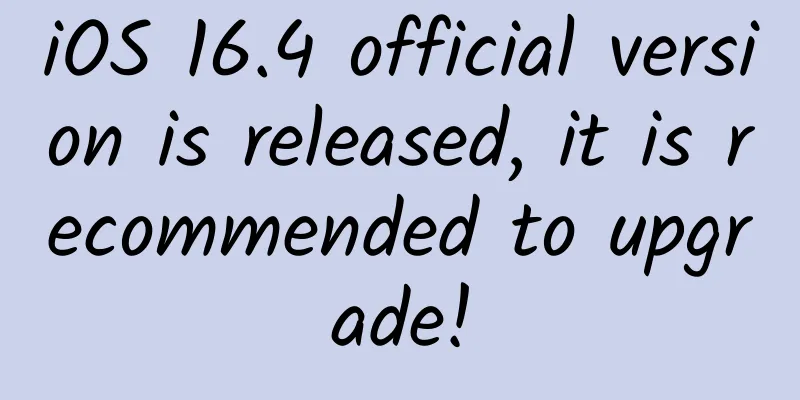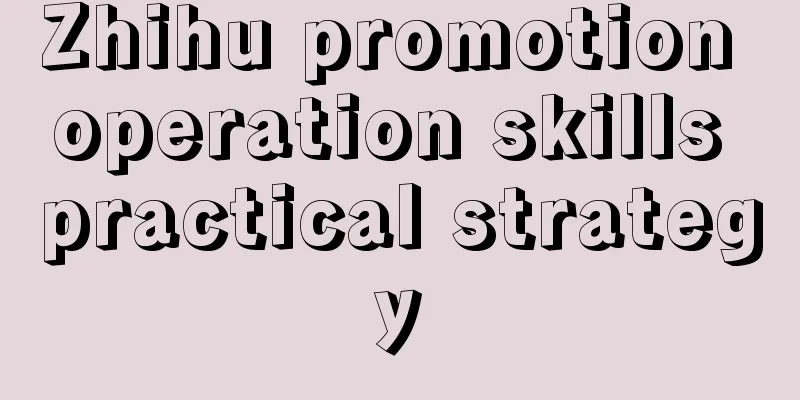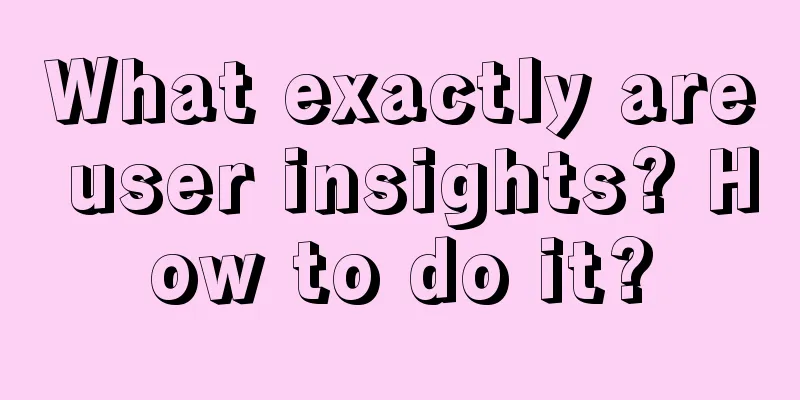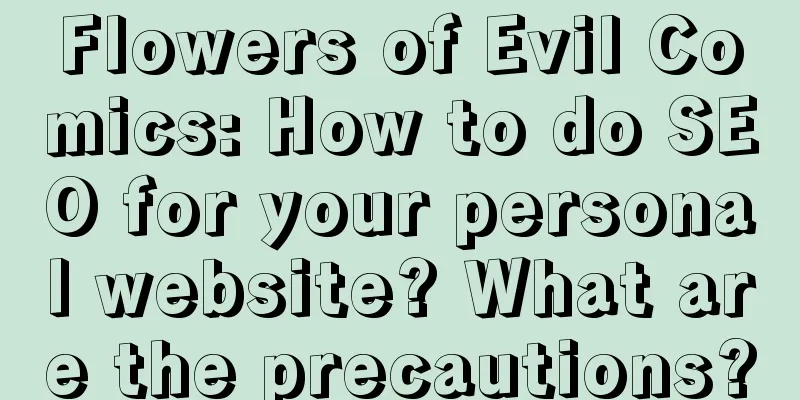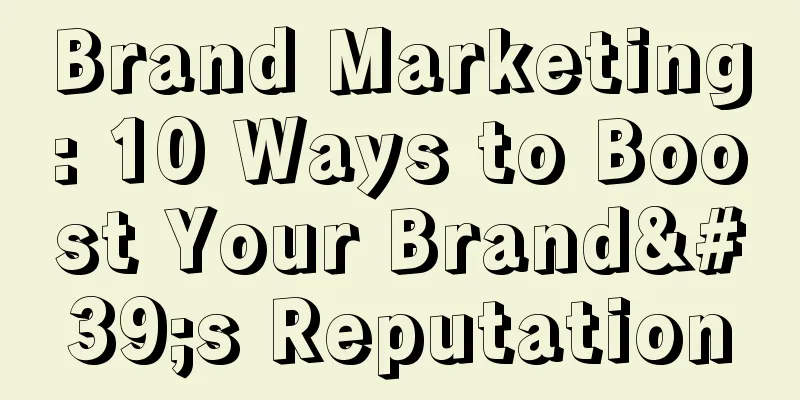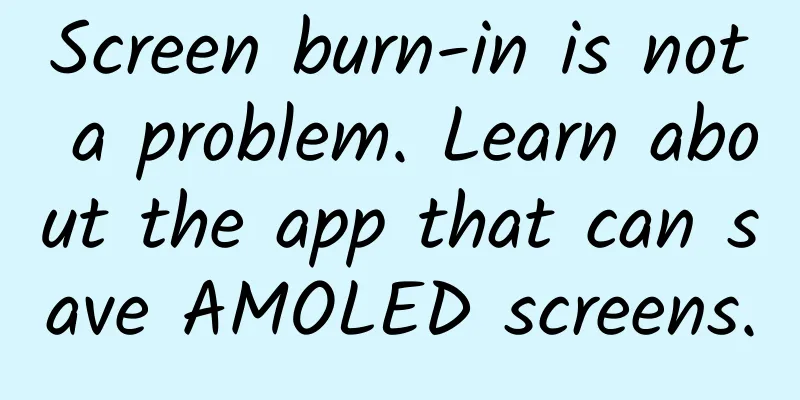How to design a good consumer-oriented App product
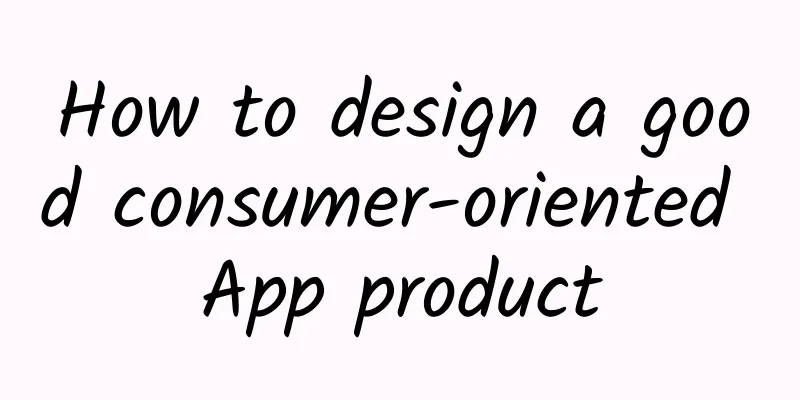
|
This article is a product sharing article, mainly to popularize how consumer content is played in KillTime. (This article has 8649 words + 26 pictures, it is still a familiar long article. I am back after half a year of no update. Did you miss me?) Part I - Popular Science on Consumer Products and Their Development Look at the English sentence above. I used "Spend Oriented". The word "Spend" itself is a neutral word, not just about spending money. If you look up the original definition of the word "consumption", it means "the process of using social products to meet people's various needs." What we are talking about here today is actually the app products where "users consume content", which may be pictures, texts, or streaming media. In other words, the apps we are talking about today are all related to "Kill Time". Then let's take a look at the following three pages of PPT: 1. Evolution of consumption to products: I roughly divide the consumer products I will talk about today into four categories. After skipping the first category of games, there are three categories left: a. Picture and text feed app products: This type of product has actually evolved from a portal to an app. In the early Internet era, all graphic and text content was on portal websites. At that time, portal websites such as Sina, Sohu and NetEase were actually content-centric. Users revolved around the content, and users would choose and identify the content they wanted to consume. Then in the process of transitioning from portal to app, at the beginning, for example, Sohu News app was actually a pure transplant from portal to app. Its essence has not changed. It is still content-centric, and users revolve around content. However, with the development of mobile Internet, because the characteristics of mobile terminals are "high frequency and multiple times", it is not like a portal that I can only read while sitting in front of the computer at work. The characteristics of mobile terminals determine that I can open it anytime and anywhere, whether I am taking a shit or riding a car. If it is still content-centric at this time, users will need to go through a long process of selecting content every time they come in, and the time for consuming content will be compressed accordingly. At this time, the entire news mobile app product has transformed from "content-centric" to "user-centric". For the first time, there was a user-centric concept, such as an account system, where users can collect and like (Mark) some content that they are interested in, and then push and subscribe through users' likes, reading and clicking behaviors: In addition to news portals, there is another type of graphic and text products that aggregate interests. At the beginning, everyone will find that each product focuses on one direction. If you want to see something, you go to the corresponding place: for example, Tianya Maopu is a storytelling and joke community, Rongshuxia focuses on youth literature, and Hupu is related to sports. Everyone develops in their own vertical fields and does not interfere with each other. However, the essence of these UGC platforms is still producers, that is, people. As each platform has its own big V, NetEase launched blogs, which is a product with a people-centered distribution structure. In addition to the people-centered distribution structure, Baidu thought, weren’t the previous portals very vertical? Then can I build a platform to aggregate various interests in the form of a "bar" here? So there was an interest content aggregation platform "Tieba", and then with the development, everyone found that the user consumption cost of blogs was too high. A big V's article has several thousand words, and it is also very laborious to produce content and for users to read it. It would be better to make a micro blog to let more people speak out, so Weibo was born. △.Since we are talking about this, let me go a little further here. In fact, the development process of the Internet is like this. It cannot avoid platforms and verticals. Think about whether the e-commerce products five or six years ago were the same. At that time, only Taobao was a platform. Others, such as JD.com focused on home appliances, No. 1 Store was snacks, Jumei was cosmetics, and Meilishuo Mogujie was clothes (Mogujie focused on the workplace and Meilishuo focused on campus) b. Entertainment products & c. Tools products: I drew a big frame for the pan-entertainment products. The initial prototype was probably to meet our needs of "listening to music" and "watching videos". Then everyone knows the first few portals, such as Youku Tudou, Tencent Video, iQiyi, Sohu Video, LeTV, etc. In the first few years, the Internet infrastructure was not good, and technology was not developed in place, so the video clarity was very low, and the download rate was very high. People generally consumed content by "downloading it on home wifi first and then watching it". However, with the reinforcement of infrastructure, everyone found that traffic was very cheap. At this time, the business of live broadcasting by Internet celebrities began to emerge in 2015 (game live broadcasting has been around for a long time). I personally think that the reason for the birth of live broadcasting by Internet celebrities is that traffic is free of charge due to technological progress. With the rise of live broadcasting by Internet celebrities, another type of product is short video. I personally think that the emergence of short video products is essentially attributed to the fact that traffic is free of charge, and more importantly, it is to solve the problem of excessively high content consumption costs on portal video websites. As we all know, people are getting lazier and lazier now. It is difficult to sit still and watch a 40-minute TV series without distraction, so now video apps have double-speed playback. The fundamental reason for this is that the high points (the points of satisfaction) of users’ content consumption are getting higher and higher. Let’s talk about the evolution of listening to music. At first, people listened to music, and then Sing Bar, Kugou, and Starmaker from abroad came out to make singing apps. At that time, the app was essentially a tool, but when users generated UGC content, a lot of works were deposited in these tool apps, so this type of product began to be de-tooled and became a product that was half social and half tool. In addition, after the K song products became popular, FM products appeared, because they all consume audio and live audio, they have something in common, so I won’t expand on it here. Finally, this type of audio product is not satisfied with just audio, so it started to make videos. This is why if you open Kugou, Sing Bar, or many foreign apps now, you will find that all entertainment products have short videos. 2. The core goal of consumer products GNT is a term proposed by Luo Zhenyu in his 2016 year-end speech. We assume that the average time each person has from 8 am to 12 pm is disposable time, and the annual number of new Internet users in China (10 million this year) has stabilized at the same level as the number of births, so we believe that the total number of Internet users will not change much. For example, I used to spend three hours watching TV series on Youku, Tencent, and iQiyi, and one hour listening to NetEase Cloud Music. Now I only spend about one hour watching TV series and the other three hours on Douyin. At this time, everyone will find that the decisive dimension of consumption towards products is not their own vertical field. Before, we would think that the video portal with the best source of films would be awesome, but this is not the case now. In addition to vertical comparisons, current products are more competing in the time dimension. This is why products like Douyin are suddenly very popular. I will focus on Douyin later, so I will skip it here. 3. In order to occupy more user time, designers can focus on: Whether the content source is high-quality (here "high-quality" refers to the March value of the content and the user) is actually the biggest indicator of whether the user consumes it, because the March value of the content source and the user is mainly reflected in the first two questions below: What content is shown to users? What is the priority of this content? Generally, we designers cannot control these two issues. What content is displayed to users at what time and in what environment is often related to user historical behavior and algorithms. If you have watched Toutiao's algorithm open class, you will know that Toutiao's recommendation algorithm is actually controlled by three categories (content dimension, user-side features, and environmental features) and tens of millions of vector features. If it is not a pure algorithm recommendation, there will be operations to intervene in the exposure of content. Therefore, designers can intervene less in this part. What we can really intervene in are the last two issues:
Part 2 - The mainstream presentation form of consumer content: Feed Flow△. Can anyone tell me about Feed Flow (How to translate the Chinese version of "Feed Flow" that we talk about at work? Orz...) 1.RSS vs Facebook's New Feed If you are an early Internet user, you must have heard of the concept of RSS: RSS (Really Simple Syndication) is a tool that allows users to read website content that supports RSS output without opening the website content page on the client side with the help of RSS-supported aggregation tool software. For example: As shown in the figure below, in the PC era, Xiao Zhang would regularly open the Wall Street Journal, ChinaDaily, and Wang Laosan's blog every day to read the content inside, but opening three websites every day made Xiao Zhang feel very annoyed. At this time, with the help of RSS tools, he can aggregate the three (RSS-supported) content sources into a third-party RSS tool, so that he does not have to repeatedly open the three websites every day. In addition to obtaining the outdated content of these three websites, the daily updated content of these three websites will also be presented in real time in this RSS: In an RSS aggregation tool, each single content source is called a Feed (which means nourishment, that is, continuously satisfying the user's consumption needs). As we all have seen, the early Feed sequence is a concept derived from RSS, and the sorting of the Feed stream is also user-defined. For example, it can be sorted by Timeline, or aggregated by user-defined Tags, or by interest tags (collections, likes, and thumbs-up are all interests in a broad sense). Then everyone understands that the Feed stream in RSS is essentially a user-defined tool for collecting content. In 2006, our father Facebook started to do social networking. Because Facebook is an aggregation of relationships between people, Facebook actually borrowed the concept of Feed at that time and created a new type of Feed with "Follow" as the core. In the book (I forgot which book it was), it was called Facebook's New Feed. It actually has three characteristics: 1. The content source is from URL to person's status (in fact, it is also a sequence of URLs). 2. Not only the basic sorting of Timeline, but more indicators are involved in determining the content sorting. 3. Non-subscription content is mixed in the subscription content (refer to Weibo), so that users can never finish the endless consumption. The above picture is a comparison between RSS and Feed. Today, almost all consumer products on the market (news, Weibo, Instagram, Snapchat, short videos, etc.) have been improved on the basis of Facebook New Feed, so today we call this New Feed more commonly known as Feed. You can search for Feed in PM communities and find a lot of articles to read. I won’t go into details here. Part 3 - Matching, Distribution and Consumption Knowing the concept of feed can help us understand the next question. Do you remember what the next question is? 1. How to let users quickly find the content they are interested in for consumption? This involves the choice of content source presentation method. 2. How to reduce the interaction cost of users when consuming content as much as possible? This involves two issues. One is to make users as immersed in consumption as possible from the perspective of interaction, and the other is the issue of cross-promotion and diversion. 1. The app model of distribution first, then consumption: Let's first look at the two mainstream feed diversion modes: one is to insert a follow sequence like Weibo into a non-follow sequence (recommendations, advertisements, etc.); the other is that when the user cannot pull out a new feed after browsing the follow sequence, there is a diversion button prompt. Don't underestimate this small prompt, it can often bring 5-7% (my own work experience data) of new module traffic every day. Let’s talk about how users can quickly find the content they are interested in and consume it. This involves the presentation of content sources. I gave an example in my previous article on Changba: Changba's three revisions from version 7.0 to version 8.6 sacrificed display efficiency (from 7 to 5) and highlighted text information because we found that image information is not enough for users to make interest judgments. You can see the following picture to understand: The pictures of Kuaishou are simply a form of presentation of the content. You can basically get an idea of what the content is through the pictures. If it is difficult for users to judge, Kuaishou encourages users to type in descriptions when uploading videos. For example, you can see the red words in the picture, which explain the content of the video. In this way, users can clearly get the expected content after clicking through the pictures, which is more in line with the user's mind. Let's take a look at Changba again. You will find that pictures one, two and three are all beautiful ladies. This cannot tell users what the content is like. In addition to the appearance, what supports users to click in may be the song name, the singer level of the person, and the listening volume. Only data such as the number of listeners can support users to click. After Changba changed this way, I remember that the CTR of the module has been significantly improved, but I have forgotten the specific data because I have been away for too long... So in fact, the presentation of the content source is essentially related to the content. The UI here should be designed with "how to let users quickly find the content they are interested in" as the core design goal. Specific problems are analyzed specifically~ Let’s talk about the common interactive modes for consuming content. The most common one is the Push & Back mode: the so-called Push & Back mode is that the user clicks once to enter the detail page to consume content, then clicks back to return to the feed list after reading it, and then continues to look for the next content he wants to consume in the list, as shown in the figure below: The traditional Push&Back interaction cost is too high. After watching, users need to click back, browse the content list to select what they want to watch, and then click again to enter. This is difficult to achieve immersive consumption, and the user bounce rate and closing rate are relatively high. So there is another model that allows users to not bounce out and directly browse the content under the current feed one by one: For example, Zhihu’s “next answer” click button and pull-down interaction, as well as Weibo’s video light-off flow: This model makes it extremely convenient for users to interact when consuming content. With a simple swipe or a single click, they can consume the next content, greatly increasing the immersive consumption experience: Regarding the question of how to reduce the interaction cost of users when consuming content as much as possible, there is actually another way besides the above method, which is the so-called cross-promotion. Let’s look at the picture below. The first two pictures are Toutiao Feed, and the last three are Momo: After you click on a video on Toutiao, some videos related to this video will be recommended to you (they may have the same content dimensions and are all about cooking, they may have the same user-side characteristics and are all about beautiful women cooking, or they may have the same environmental characteristics and are all about teaching you how to make mooncakes for tomorrow's Mid-Autumn Festival) for you to watch (and you will find that the iOS version of Toutiao and the iOS version of Douyin hide the statusbar by default, so you can't see the current time, just to keep you watching...). Momo is even more interesting. For example, when I click on the second entrance (right 1) to enter, there is an up and down sliding interaction. The app's instructions are: "Switch to the next anchor." According to common sense, after I let go, I should consume the content of the third entrance (left 2), right? But you will find that this is not the case. It actually jumps to a completely new feed sequence. So the concept of cross-promotion is shown in the figure below: 2. Direct consumption app model: What we have talked about above is the distribution-first-consumption model. It must have a content-bearing feed page, and then users selectively consume content according to their interests. Based on the idea of "reducing the interaction cost of users when consuming content", is it possible to remove the distribution step, not have a content-bearing page, and let users consume directly? This is the familiar Douyin: Musical.ly (later renamed Muse, copied by Douyin and then acquired by Douyin) created a product model for direct consumption of content. What are the characteristics of this model? 1. The lowest interaction cost, consumption as soon as it is opened, diversion by swiping up and down, and diversion by swiping left and right (or clicking), which is highly immersive. 2. Relying on algorithms to integrate many feed sequences into an endless feed, it completely relies on algorithms and user behavior data and short video data to determine the display priority. Let's compare the two products of "distribution before consumption" and "direct consumption": Products that "distribute first and then consume" have a content hosting page, so users can selectively click to consume, which is more respectful of users. However, products like Douyin directly force users to consume content, which is essentially coercive. Products that directly force users to consume content, such as Douyin, do not give users the opportunity to make their own choices, and force users to consume the content provided by the product. If the content is high-quality enough, it will have a miraculous effect. If the content is unsatisfactory and does not hit the user's high point, it may backfire. I think the product model of TikTok, which directly allows users to consume content, is a double-edged sword. After playing with so many apps, you should have discovered that there are many products on the market that copy Douyin. You will find that only Douyin is good, and you can't stand watching other products after watching one or two. The reason here is that users are forced to consume the content you provide. Let's assume that you are an app with really bad content. If you force the Douyin model, your first content is a pile of shit. The user swipes and skips halfway through. At this time, he finds that the second content is also a pile of shit for him to eat. The user's willingness will drop sharply, and he may even turn it off after one or two videos. But if it is a model that distributes first, it is a pile of shit, but I tell you that the first pile of shit is strawberry flavored, and the second pile of shit is orange flavored. At this time, which pile of content the user wants to consume is his own click choice, and it has nothing to do with you. You, the app designer, do not have to bear the risk of forcing users to consume. Naturally, users will be more tolerant of the content they choose. They may not turn it off after watching one or two, but may watch four or five. Does this increase the browsing time? Let me tell you something theoretical, the ideal time model of Tik Tok content (the name is just something I picked up randomly): as shown in the figure below We assume that under ideal circumstances, the user will not be interrupted if he has nothing else to do and can keep scrolling through Douyin for his entire life as long as he wants. Then we study the relationship between content quality and user browsing time: we assume that each individual user has an average matching line (Marchline) (this matching may be in the content dimension, for example, I like to watch Dota but not League of Legends, I like popular science but not chicken soup for the soul, etc.). As long as the content is higher than the matching line, it is a positive stimulus (Positive) to our minds. We assume that each video is 15 seconds long. You will find that the first video you see when you open Douyin every day is always of high quality (in fact, when Douyin was first cold-started, the videos prepared were all high-quality scripts purchased at 1,500-3,000 each, which cost tens of millions. Therefore, these high-quality video sources laid the foundation for the first wave of Longhu retention). If the first video is always of high quality and users like it very much, then the mind will rise, which is a positive feedback. Then, if the second video is also very exciting, it will push users to the high point. If the third video is pushed at once, a particularly bad one or a user is not very satisfied with it is pushed to the user without calculation, theoretically, the user interaction cost is very low, and the user may only watch half of it and swipe it. However, if the user is pushed very bad content two or three times in a row, the negative stimulation (Negative) of the user will increase, and half of them will quit after two or three times. One of my thoughts here is that the user's Marchline is actually floating: Marchline (new) = Marchline (old) + △Willing The vector sum of positive and negative stimulations from each time the user opens the app to close the app. So in essence, the short video design method of Douyin, which is consumed as soon as it is opened, is the product of extreme confidence in its own content. Remember that the Douyin model is a double-edged sword. If you are not so confident in your own content or are unwilling to spend money to develop content, try not to use this kind of interaction as it is easy to fill users with shit and the loss outweighs the gain! 3. App model of consuming and distributing at the same time: I have already mentioned the two product models of Kuaishou (distribution before consumption) and Douyin (direct consumption). They have their own advantages and disadvantages, but in the past six months, product designers who love innovation have shown me a third model in the field of short videos that has caught my eye, namely Instagram's IGTV (the entrance is in the upper right corner of Instagram, and it is also an independent IGTV app). It adopts an innovative model of distribution while consumption. It can be said that this innovation is very eye-catching. You can download it and experience it when you have time: The default opening of this product is as shown in Figure 1. The following video is playing, which satisfies direct consumption. However, there is a recommendation list below that can be slid and selected, which satisfies distribution. Then, if you need to immerse yourself in a video, sliding your finger up and down on Figure 1 will turn it into Figure 2, which becomes a completely immersive Douyin. The difference between Douyin and IGTV is that Douyin uses up and down switching, while IGTV uses left and right switching. The most amazing thing about it is that it takes consumption attributes to the extreme. Even when searching or commenting, the following video is still playing. This is a good solution to the problem of interaction efficiency and distribution. I boldly predict that IGTV's interaction model will be the focus of short videos, live video, and video social networking next year. (In fact, we have seen products such as Azer using this kind of interaction in large quantities.) To sum up, the design itself is actually solving the problem, but as time goes by, everyone's cognitive level will gradually increase. At first, we thought that the distribution efficiency of Kuaishou was too low, so when Douyin came out, everyone copied Douyin, but other apps did not have such good content as Douyin, so we made a compromise and came up with the interactive model of IGTV, which I personally think is more suitable. In fact, the idea that this article wants to explain today is "goal-oriented design". In order to solve one problem after another, we interact with micro-innovations in the process of solving problems. When micro-innovations reach a certain amount, they will become a big innovation. Every time I see a lot of innovative products, I feel happy. As a designer, you can also look at more app products, try a lot of different app products, and then classify and summarize them. I believe you will also gain something. I haven’t written an article for a long time. Today I wrote so many words in one breath. That’s all. See you next time. |
>>: Common problems and optimization strategies for mobile networks
Recommend
Tik Tok Live Script Creation Guide
When designing the script before live broadcast, ...
Operational manuscript of a post-90s beauty: How to plan an event marketing with a daily traffic of 10 million in 5 days!
I'm Zongzi, a post-90s planner who combines ...
How can a novice do a good job in business promotion?
Judging from the current situation, the main prob...
8 ways to play red envelopes to activate the community
Community operation is the term that operators ar...
Introduction to the process of 4 common marketing promotion methods
Previously we talked about some core work ideas o...
A guide to building a Douyin Blue V account matrix!
Douyin's Blue V ecosystem is very complex, an...
How can a startup team quickly acquire seed users and detonate a user nuclear reactor?
After the product is launched, someone is needed ...
How to choose your first programming language based on what you want in life
[[155653]] Life is easy for programmers. There ar...
2019 Alipay product operation analysis!
1. Product Overview 1.1 Product Introduction Prod...
Kaikeba Digital Business Analysis and Management Elite Class 01
Introduction to the resources of the 1st session ...
A brief analysis of mobile Internet advertising fraud methods. How to prevent it?
1. Causes of Cheating Here I would like to first ...
Tencent X5 and Egret Runtime jointly promote HTML5 game development
As early as September 23 last year, at the X5 bro...
Tik Tok e-commerce marketing system!
Relying on a huge content ecosystem and interest-...
The winning formula for brands to capture the minds of Generation Z!
China’s current consumption structure and consume...
I spent 600 yuan in the morning and didn’t get any conversations, but my creative idea had a high click-through rate. How can I solve this problem?
Recently, I have received many messages from frie...


